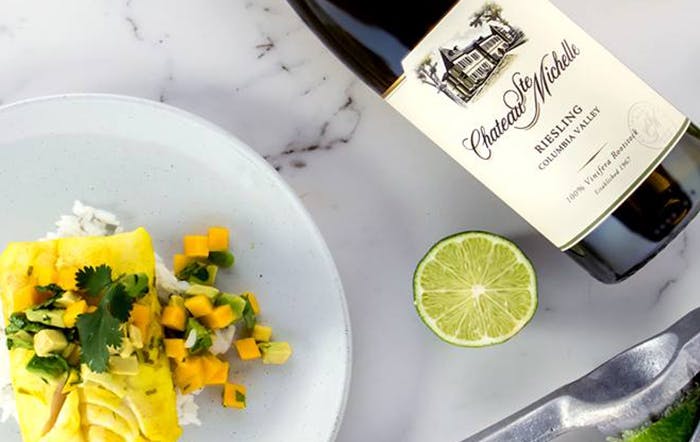3 X WAYS WINE IS MOVING WITH THE TIMES
With all the noise surrounding craft beer and gin, we forget that wine is having its own (albeit quieter) renaissance, shedding its stuffy past and appealing to the millennial and Gen-Z mindset.
The movement kicked off a couple of years ago when canned wine and mini bottles of bubbly hit supermarket shelves. For 2018, AR wine labels were the hot ticket, and this year cannabis wine that offers ‘instant relaxation’ is the press’s favourite story.
As wine's stuffy cork is popped, overly complex jargon is being replaced by easy to understand ingredients and processes.
Like whisky drinkers, younger wine drinkers are putting less emphasis on age and more on the brand story and where and by who their wine was made.
News even broke last month that Kylie Jenner is breaking into wine, after trademarking “Kylie” and “Kylie Jenner” in association with wine, cocktails, and bars.
With Amazon creating a home sommelier service through Alexa, HelloFresh adding wine pairings to their subscriptions and bottles being made to fit through letterboxes, wine is finally moving with the times.
Here are 3 x wine trends you should know about.
1. NEW FORMATS
Since the beginning of time, wine has been stored and poured in traditional glass bottles. Garçon wines are disrupting this age-old tradition by producing recycled flat wine bottles that can fit through your letterbox.
This year they’re going global and have developed a box system that can carry 10 full bottles of wine in the same space that would usually carry 4.

Fitting 2.28 times more wine on a pallet translates to lower costs in packaging and transport, reducing the environmental impact of shipping wine around the world.
In contrast, German winery Wasem has also been working on shape, but have gone the opposite way by developing a double layer wine bottle known as Cooleo which keeps wine cold by providing an extra insulating layer.
It's sealed with a glass Vinolok closure meaning the bottle can be up-cycled and reused.

As we see in other industries, start-ups are challenging nearly all the ‘givens’ in their category and seemingly everything we once took as the norm is set to be disrupted over the coming years.
2. VIRTUAL SOMMELIER’S
For as long as we’ve drunk wine, food has been its ultimate wingman. Now, technology and machine-learning AI is taking it one step further to ensure the two are always perfectly matched.
Recipe inspiration platform allrecipes.com is positioning itself as a digital sommelier by partnering with Ste Michelle Wine Estates to offer consumers immediate wine pairing suggestions for recipes on their site.

In a similar way to how Netflix and Spotify suggest what to watch and listen to, this AI tool uses consumers’ personal taste preferences, buying habits and information about what wine is available in the local area to make its recommendations.
This is a great example of how data is being used to enhance customer experiences and also provides real-time insights.
In the coming years, we'll see how AI effectively redefines industries by providing greater personalisation to users, automating processes, and disrupting how we work.
3. LOW ALCOHOL APERITIFS & BOTANIC WINE
In line with the low & no alcohol drinks trend, it's clear we're drinking less wine than we used to . As such, the wine category is evolving.
AEcorn, a new sister brand from Seedlip, has developed a range of non-alcoholic wine aperitifs designed specifically to be paired with food.

Much like Seedlip, Aecorn uses high-impact flavours from botanicals, herbs, and roots to give their signature flavour.
Each variant - dry, bitter and aromatic - is made from Pinot Noir, Meaner and Chardonnay grapes all grown in England.
The recipe was dug up from a 17th-century collection of herbal remedies called acorn wines, which were traditionally used as an appetite suppressant and to aid digestion. The bitterness and botanically complex flavour lent itself well to a very British version of the European Aperitif tradition.
Haus is another modern aperitif brand, bottled at 15% ABV to satisfy health-conscious millennials, which also means it can bypass traditional restrictions and regulations on booze, making it cheaper for the customer.

Image Credit: Haus

Both of these wines differentiate themselves through simple and easy to understand language, and are positioning themselves as the antidote to hangover-inducing, complex and snobby wines.
By 2027 millennials are projected to surpass Gen X as the largest wine consuming demographic. Although it’s a while until then, and elitist stuffy wine is still very much the norm, we’re definitely beginning to see a shift.
New start-ups are bypassing traditional methods of ageing, bottle formats are evolving, new technology is being used to improve our experience and we’re taking more care over the wine we buy.
As we see more and more brands creating products and innovations to fit around new lifestyles, wine is definitely an exciting category to keep your eyes on.
Want to say hello, ask questions or challenge our cultural knowledge? You can drop us a line at hello@lovecreative.com.